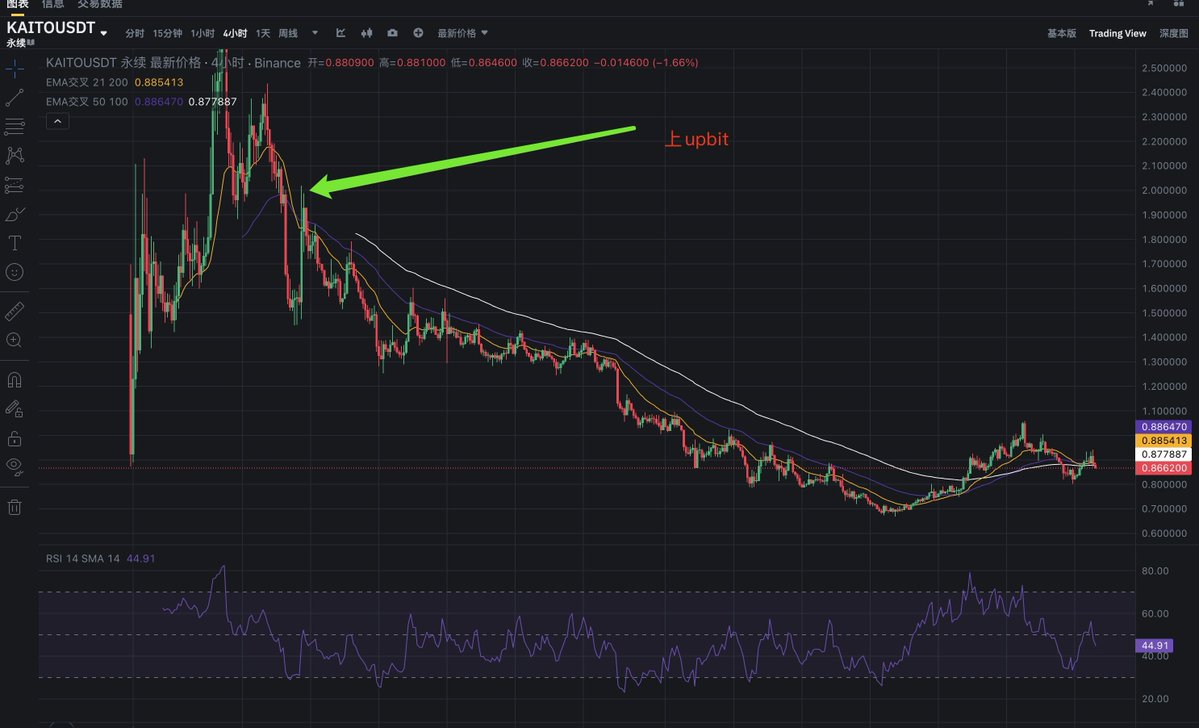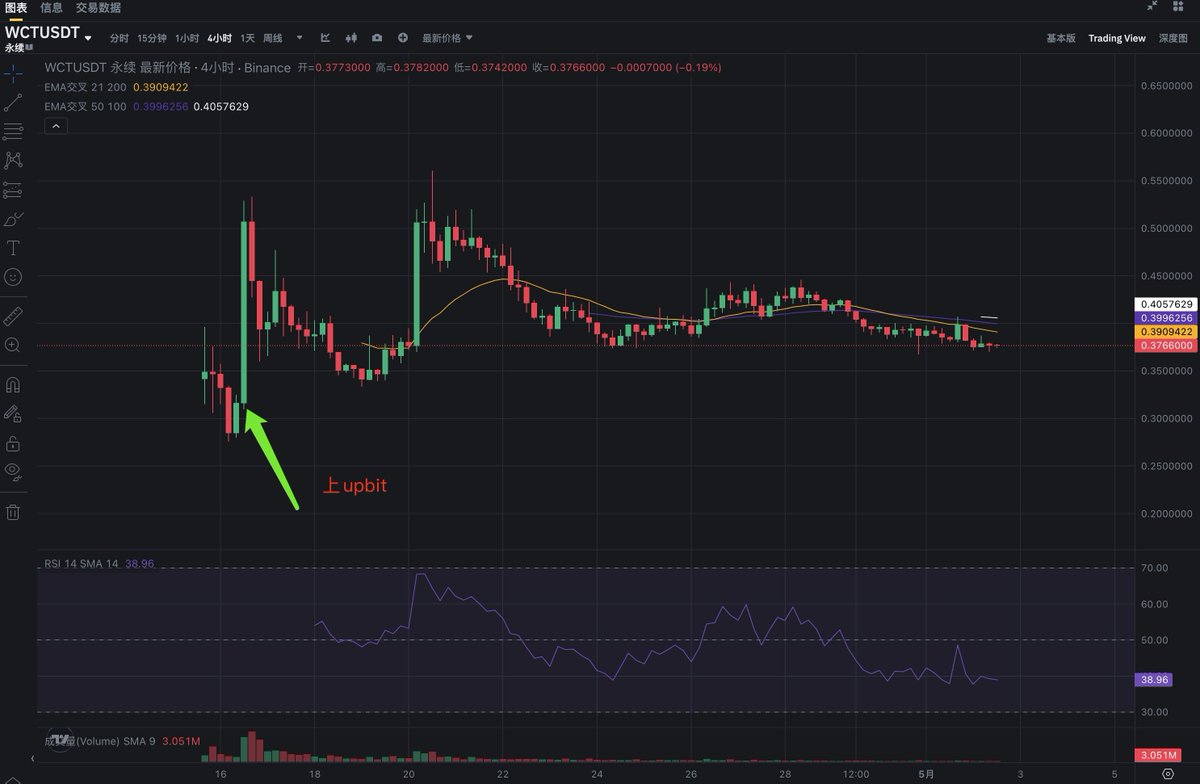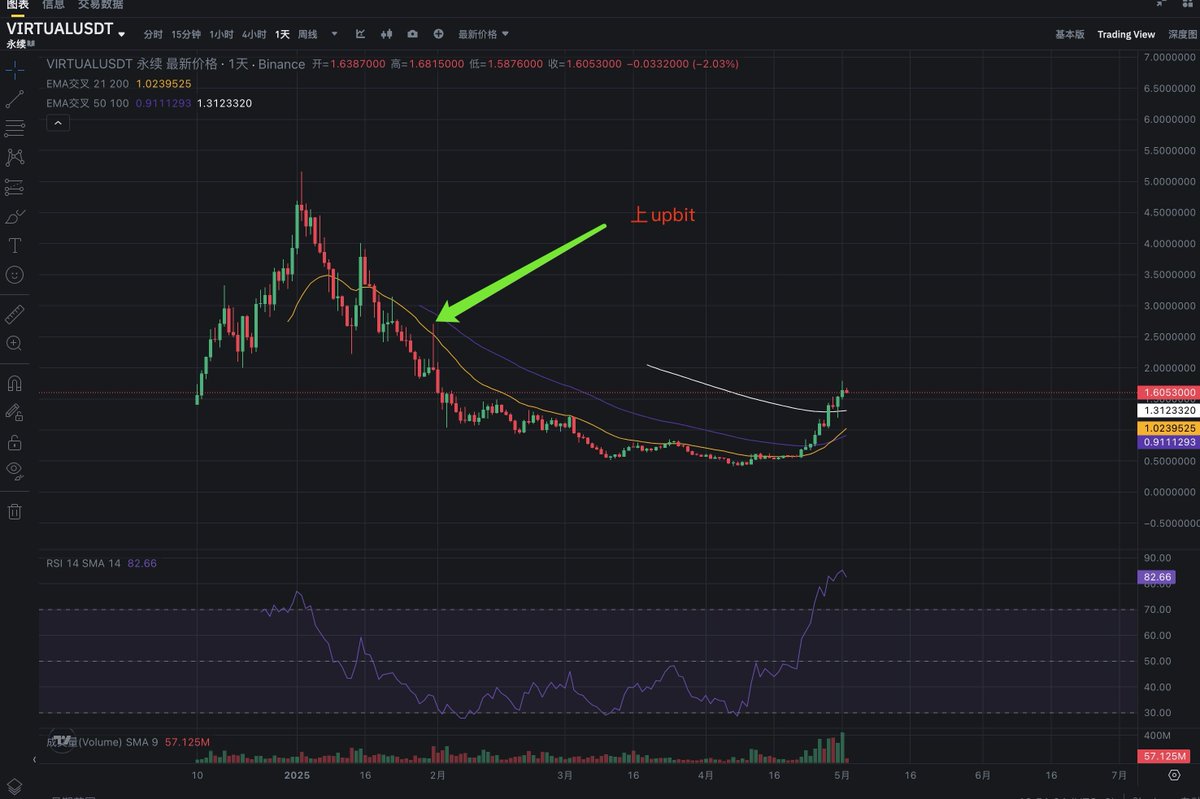I organized the patterns of these few. Previously, when I shorted, I always avoided targets listed on Korean exchanges, as they are generally tougher. However, if you master the rhythm, they can actually offer better risk-reward ratios and more profits. Remember not to short from the left side.
The only one that gave me a hard time back then was $WCT. I forgot the exact reason, but after it got listed on Upbit, it even had a secondary rally.
Next time, I'll organize something for Bithumb. Its pump effect isn't as strong as Upbit's, but it's still worth a look.




My strategy for shorting newly listed altcoins is simple.
1. On-chain coins with small market caps that have risen significantly and have a lot of profit-taking will inevitably be dumped after being listed on CEX due to market sentiment. Most of the time, even the main players can't support it, especially those coming from Solana (BSC will be more cautious because BSC's natural buying volume is already low. Those that manage to break out from the chain are usually heavily controlled by the main players who forcefully push them onto exchanges. If the car is light enough after listing, they might be able to support it and then pull it up to execute a short squeeze strategy, but most will follow the strategy of dumping after listing on CEX).
2. VC coins that open high on Binance contracts and spot markets, where the main players wait a few days for retail buying to push it up, then start dumping. This requires looking at the charts and trading volume to determine when the project team starts selling.
3. If the project team is strong enough and you see that the Korean community is doing well in terms of volume and community engagement, it might get listed on Upbit after Binance. These main players usually aim for Upbit, and before listing on Upbit, they will support the price. Even if they distribute, it won't be too aggressive. The moment it gets listed on Upbit is the best time to short because after achieving the Upbit listing goal, with such a large buying volume coming in, it's impossible not to dump and let the retail investors who rushed in continue to push the price up. You can look at the chart of Kaito Virtual Sign a few days after it got listed on Upbit.
Of course, there are exceptions like Layer that keep rising, but even Layer had a wave of dumping after the first listing to lighten the load before pulling up the price. So after shorting the first wave, just look for new shorts. There's no need to stubbornly short again after they finish washing out the positions and start the second wave of price increase.
The above is the general logic. When shorting, you still need to consider the market sentiment, liquidity, the project's fundamentals, and the opening price comprehensively, as these reflect the overall market-making strategy of the project. For example, if the market liquidity is very good and you see a project with a particularly low market cap and good fundamentals at the opening, the main players definitely have some tricks up their sleeves, so don't stubbornly short it. Just pick some easy targets 😂.
5.28K
5
The content on this page is provided by third parties. Unless otherwise stated, OKX is not the author of the cited article(s) and does not claim any copyright in the materials. The content is provided for informational purposes only and does not represent the views of OKX. It is not intended to be an endorsement of any kind and should not be considered investment advice or a solicitation to buy or sell digital assets. To the extent generative AI is utilized to provide summaries or other information, such AI generated content may be inaccurate or inconsistent. Please read the linked article for more details and information. OKX is not responsible for content hosted on third party sites. Digital asset holdings, including stablecoins and NFTs, involve a high degree of risk and can fluctuate greatly. You should carefully consider whether trading or holding digital assets is suitable for you in light of your financial condition.


